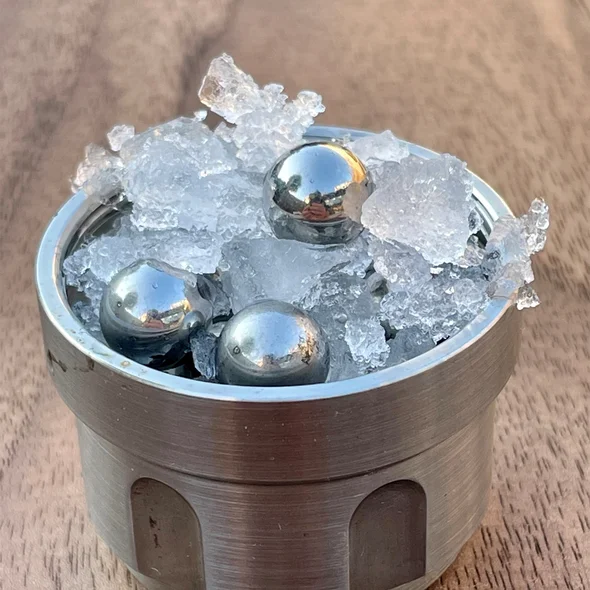Ice, Moons, and Extraterrestrial Life: Medium-Density Amorphous Ice

It can be disturbing to consider the fact that all of life is entirely dependent on 3 atoms, and more specifically 2 elements — H20, more commonly known as water. Given that life hinges entirely on that one molecule, it might come as a surprise that scientists still do not have a complete understanding of it.
After the invention of X-ray crystallography in 1912, which involves firing X-rays at a crystal to reveal its molecular structure, researchers discovered that there are multiple variants of ice – eighteen to be exact, which all vary in molecular structure and emerge from different temperatures and pressures. In the natural world, the most abundant forms are “hexagonal crystalline ice” and, to a very small extent, “cubic crystalline ice.” Most of the forms of ice maintain some sort of crystalline structure, but there are also 3 amorphous — meaning “without shape” — types, which completely lack structure. These almost resemble a liquid: one has low density, the other high density, and the third very high density.
This was the extent of our knowledge until earlier this month, when, in a research article published in Science, a group of scientists announced their discovery of a new type of ice, known as “medium density amorphous ice.” Using a technique called ball-milling, which uses 1-cm wide steel balls to crush ice into a fine powder, the team, led by Dr. Rosu-Finsen of the University College London, managed to create the new kind of ice at a temperature of -200 degree Celsius. Even more promising, a team at the University of Cambridge was able to reproduce the ice, corroborating their findings.
Given the apparently single purpose of ice nowadays – cooling drinks – these amorphous forms may seem completely obsolete, especially considering the unique temperatures and pressures at which they exist. However, they play a much more important role when looking past the Earth, to other parts of the universe. Beyond our terrestrial atmosphere these different types of ice are actually much more prevalent, specifically due to the extremely low temperatures and high levels of ultraviolet radiation. More pertinently, Jupiter and Saturn each have icy moons, Europa and Enceladus respectively, which scientists believe to have oceans trapped under their ice. Both moons experience tidal forces from other surrounding moons – Jupiter has 92 as of now. These forces force the ice to flex, sometimes causing impacts between two surfaces. Events like these might create “medium-density amorphous ice,” which would result in serious density variations and surface lesions, allowing the water to finally escape its icy prison. With H2O available, these moons would have the necessary conditions for life, albeit at -300 degrees Fahrenheit.

Paolo, a current senior, is looking forward to his third year writing for the Banner, this time as a section editor. Outside of the Banner, Paolo is the...

